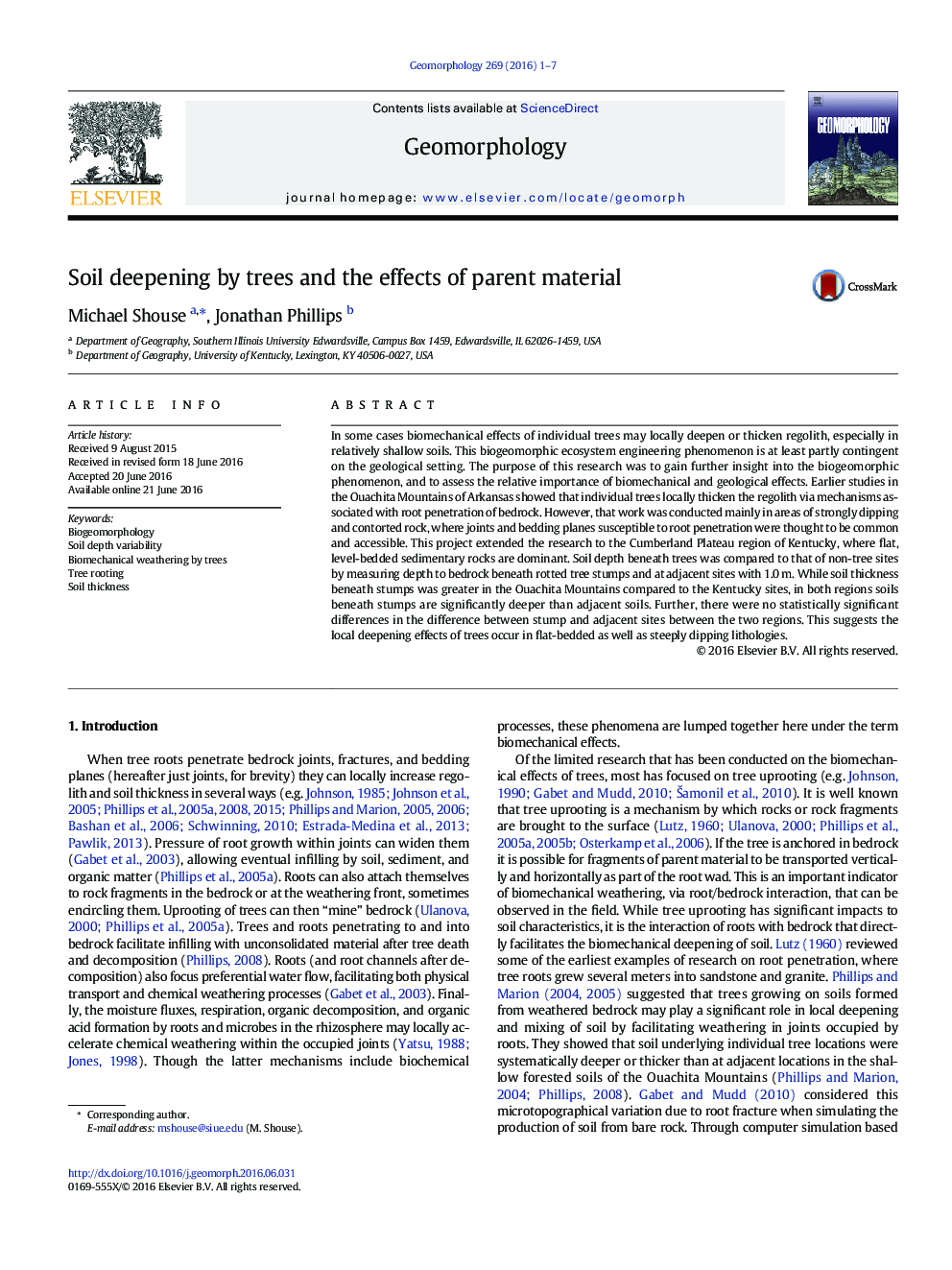| Article ID | Journal | Published Year | Pages | File Type |
|---|---|---|---|---|
| 4683926 | Geomorphology | 2016 | 7 Pages |
In some cases biomechanical effects of individual trees may locally deepen or thicken regolith, especially in relatively shallow soils. This biogeomorphic ecosystem engineering phenomenon is at least partly contingent on the geological setting. The purpose of this research was to gain further insight into the biogeomorphic phenomenon, and to assess the relative importance of biomechanical and geological effects. Earlier studies in the Ouachita Mountains of Arkansas showed that individual trees locally thicken the regolith via mechanisms associated with root penetration of bedrock. However, that work was conducted mainly in areas of strongly dipping and contorted rock, where joints and bedding planes susceptible to root penetration were thought to be common and accessible. This project extended the research to the Cumberland Plateau region of Kentucky, where flat, level-bedded sedimentary rocks are dominant. Soil depth beneath trees was compared to that of non-tree sites by measuring depth to bedrock beneath rotted tree stumps and at adjacent sites with 1.0 m. While soil thickness beneath stumps was greater in the Ouachita Mountains compared to the Kentucky sites, in both regions soils beneath stumps are significantly deeper than adjacent soils. Further, there were no statistically significant differences in the difference between stump and adjacent sites between the two regions. This suggests the local deepening effects of trees occur in flat-bedded as well as steeply dipping lithologies.
